Between the beautiful scenery, jaw-dropping engineering and extra friendly locals along the way, this trip across the Goteik Viaduct, Myanmar’s highest railway bridge, is one for the ages.
Simply put, this is one of the world’s great train journeys.
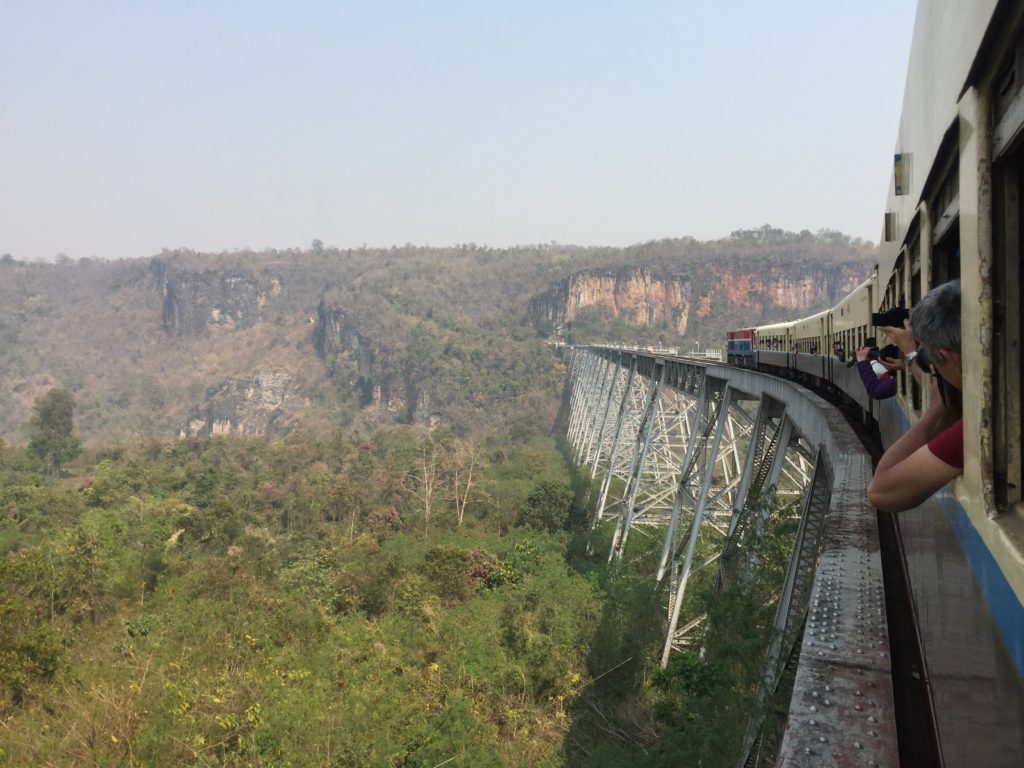
THE TATMADAW
A uniformed member of the infamous Tatmadaw — the Burmese military — looked at the picture on my phone.
He didn’t like what he saw.
The clean-shaven gentleman shook his head from side to side while asking me in broken English to delete the photo. I obliged, uncertain of my offense.
He rifled through the pack at his feet and from the deepest recesses produced a small aerosol spray can. The official gave the can a few shakes, held it at arm’s length and proceeded to touch up his wind-blown hair.
Rattling down the tracks in an open-air train carriage will do a number on even the most perfectly coifed hair, you understand.
After satisfactorily touching up, he grabbed his phone then positioned it beside his ear. He gave the okay for a new attempt.
I framed the shot, snapped a picture and showed him the screen a second time.
Thumbs up!
Only one caveat — he asked that I not post the picture on the internet. I blurred any identifying details in the photo to honor his request.
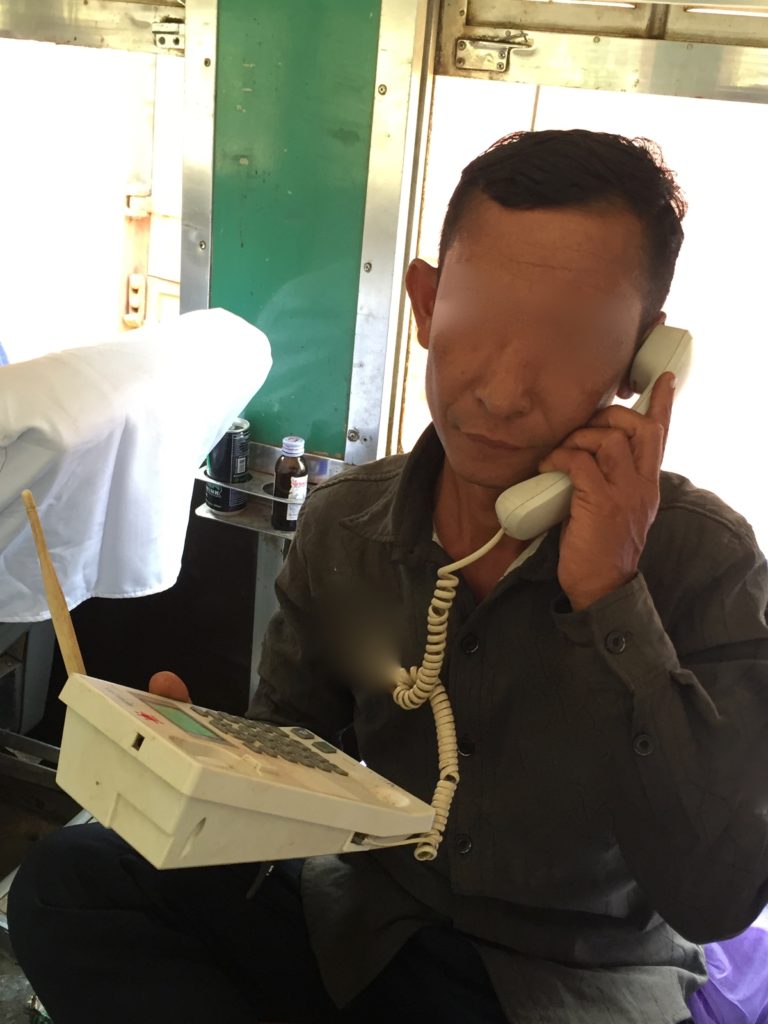
MR. HAIRSPRAY
Why was I snapping photos of a senior member of one of the world’s most brutal militaries, you ask?
A few moments earlier this gentleman had been speaking into a phone. No big deal, right?
Well, it was a desktop phone. Obviously unattached to anything. And if you recall, we were on a train. Rolling through the hills of Shan State.
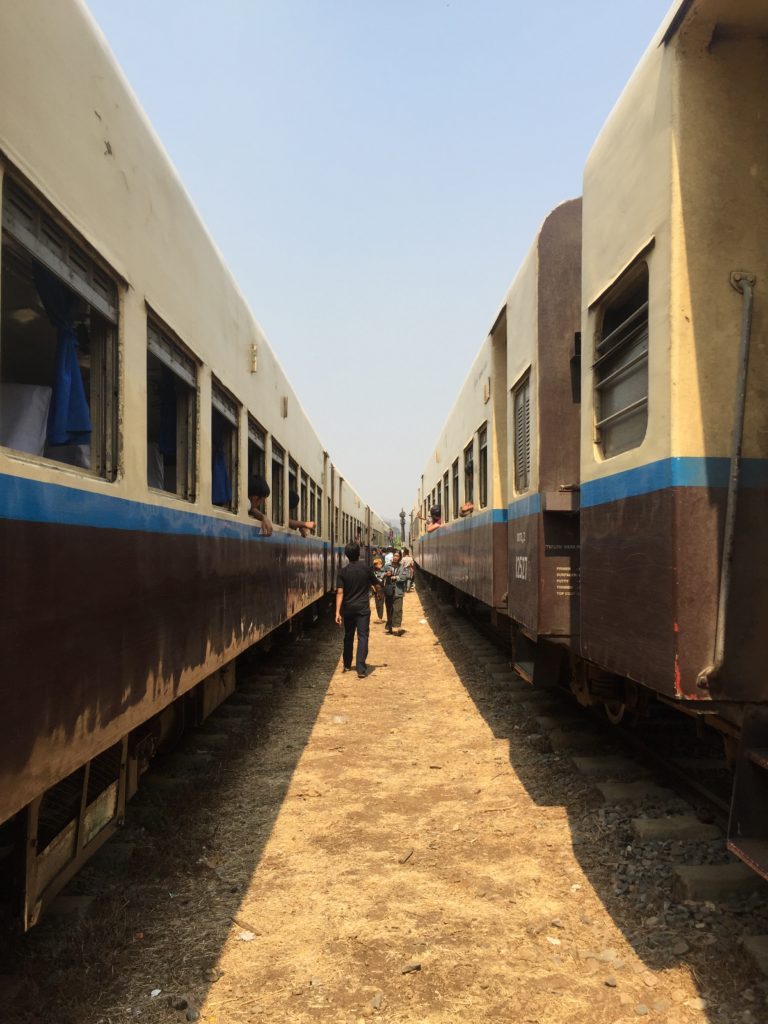
The weird phone action caught my eye while peering between what passes for first-class seating on Myanmar’s rundown railways.
I watched a uniformed man in front of me pick up a telephone receiver, hold it to his ear and punch in a series of numbers. Seemingly frustrated, he hung up and tried again. During a second attempt he spoke a few sentences into the receiver before quickly hanging up.
The phone antics continued for several minutes.
What is this guy doing??
I thought this man surely drunk, possibly mentally impaired.
With the phone eventually retired I moved to a broken seat across the aisle for a chat.
I offered up my best “Mingalabar” (hello in Burmese), mimicked a phone and pointed to the canvas backpack which held the phone. He spoke very basic English, but like most Burmese more than happily humored my curiosity.
As a member of the military he carried several phones — four in all, including what looked like a desktop phone. Turns out the object of my fascination was a satellite phone.
And it actually worked.
Moments later the hairspray can made an appearance.
INTO SHAN STATE
A few hours earlier I settled in to B4, my permanently reclined seat. I fumbled with the broken handle in the armrest and settled in for the journey.
A constant parade of vendors teetering down the aisle and hawking all manner of goods drew my attention.
Steel plates swiveled dangerously across the gap between carriages. I peered through the tiny window of an adjacent car to find it packed to the rafters with members of Myanmar’s military.
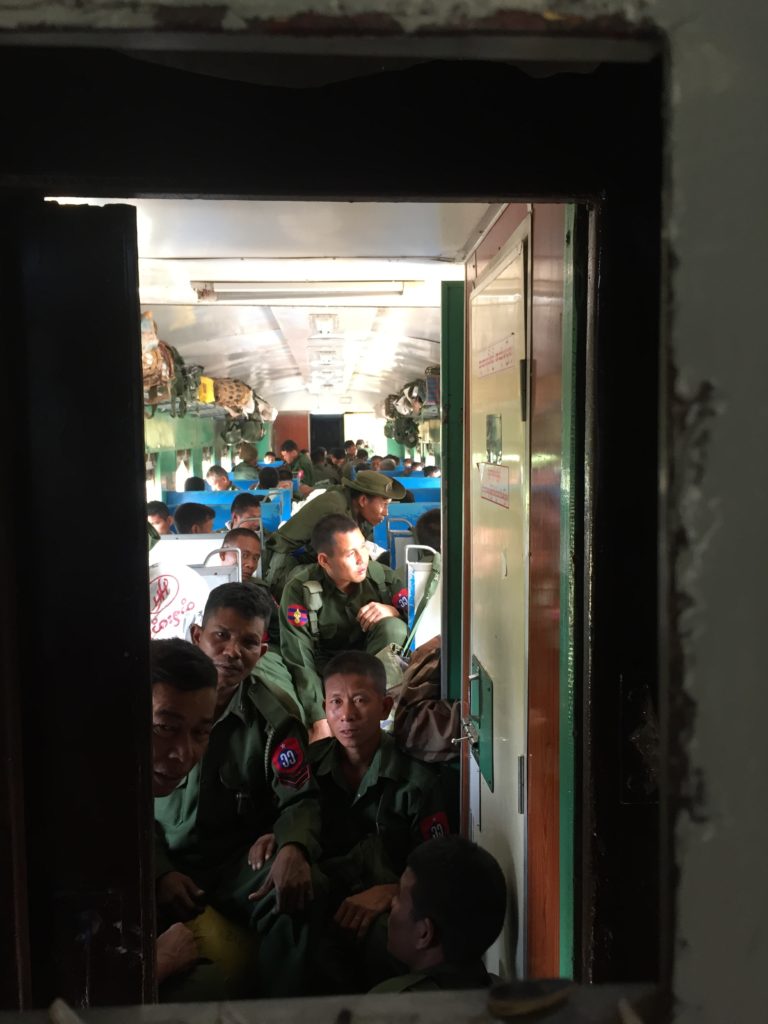
Meanwhile local life passed by outside, a flip book of everyday activity beyond my window seat. Farmers worked small plots of land while women in traditional longyi walked dirt paths.
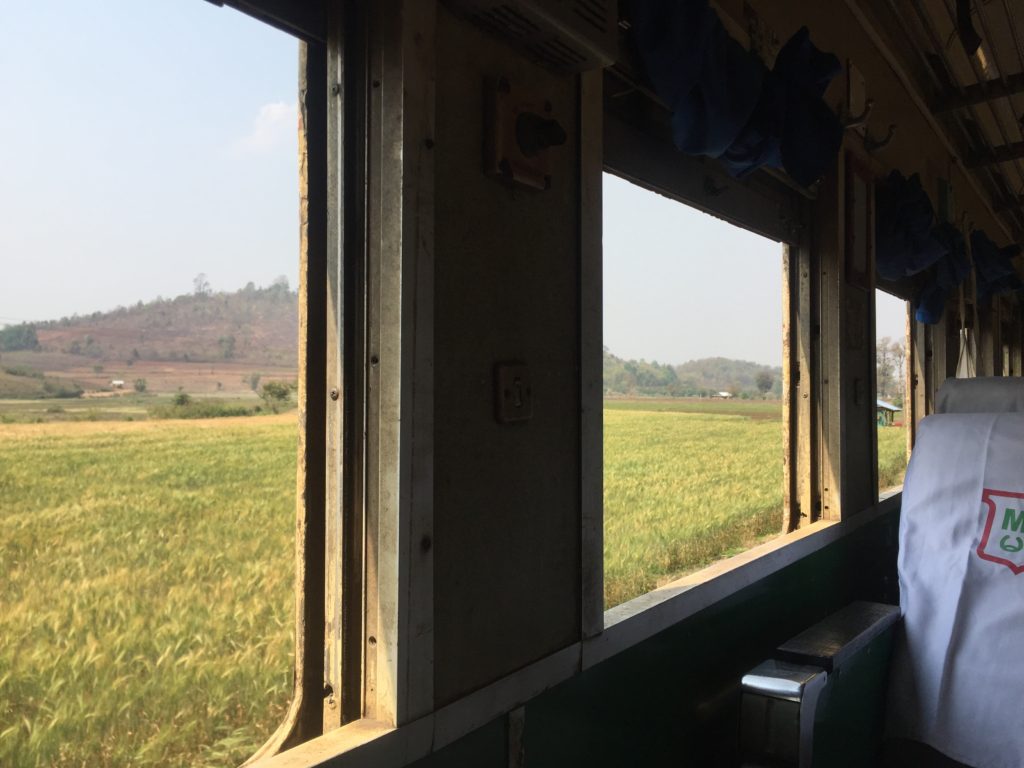
Leafy tree branches popped in and out of the massive windows as the hulking diesel train click-clacked noisily down the tracks. I was constantly jostled around by the bumping of the carriage. It seemed like the train didn’t exactly fit into the track.
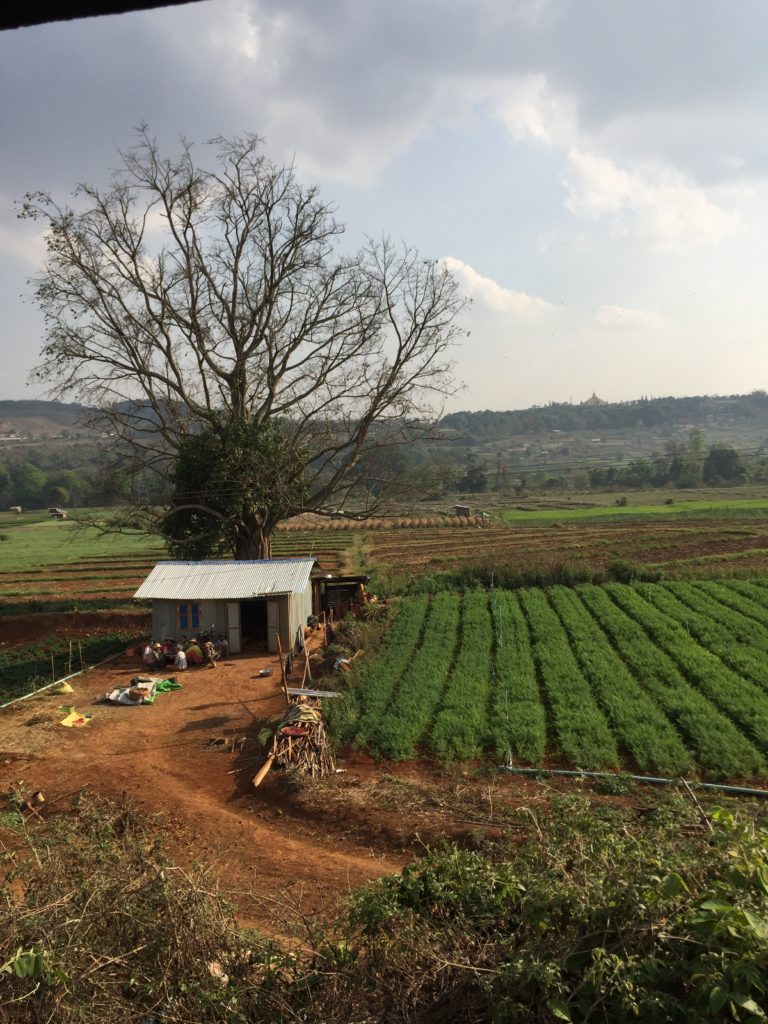
I was enchanted.
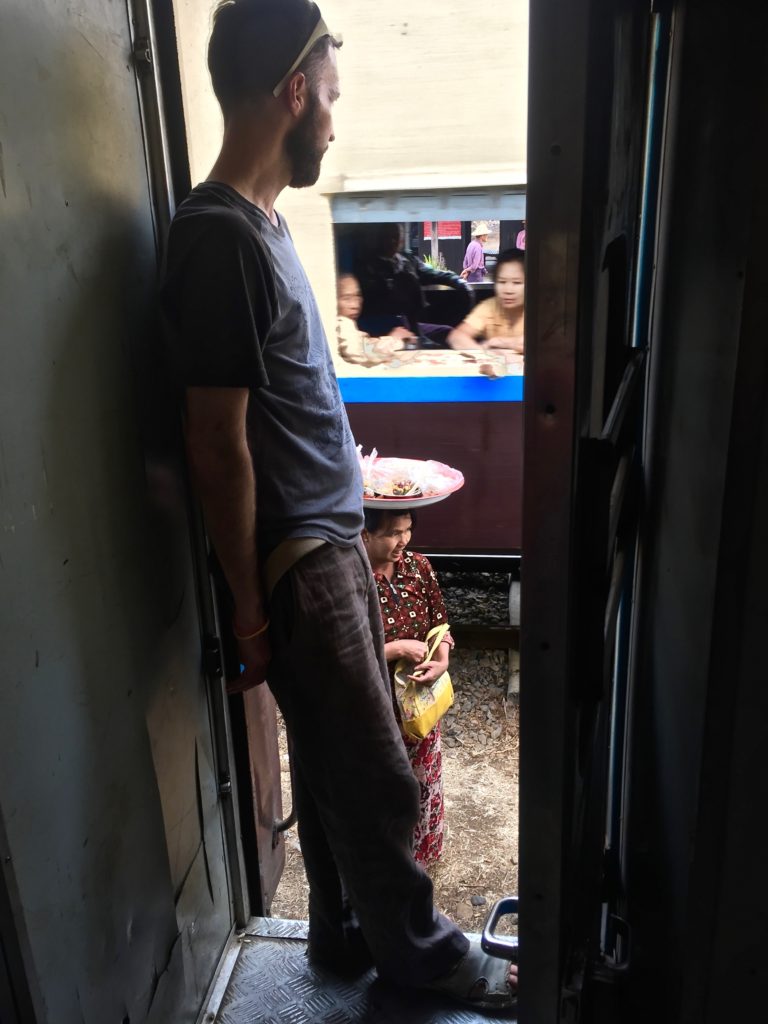
THE GOTEIK VIADUCT
Mr. Hairspray and I were three hours into the seven hour southbound journey between dusty Hsipaw and the former colonial capital of British Burma, Pyin Oo Lwin.
The main attraction on this stretch of rail, the engineering masterpiece and world-famous Goteik Viaduct, was quickly approaching.
The Brits were running the colonial show here back in 1901, so they oversaw the building of the Goteik Viaduct as a means to extend their influence up to the Chinese border. The structure was designed and fabricated in the United States by the Pennsylvania Steel Company, then shipped across the globe for construction by the Burma Railroad Company.
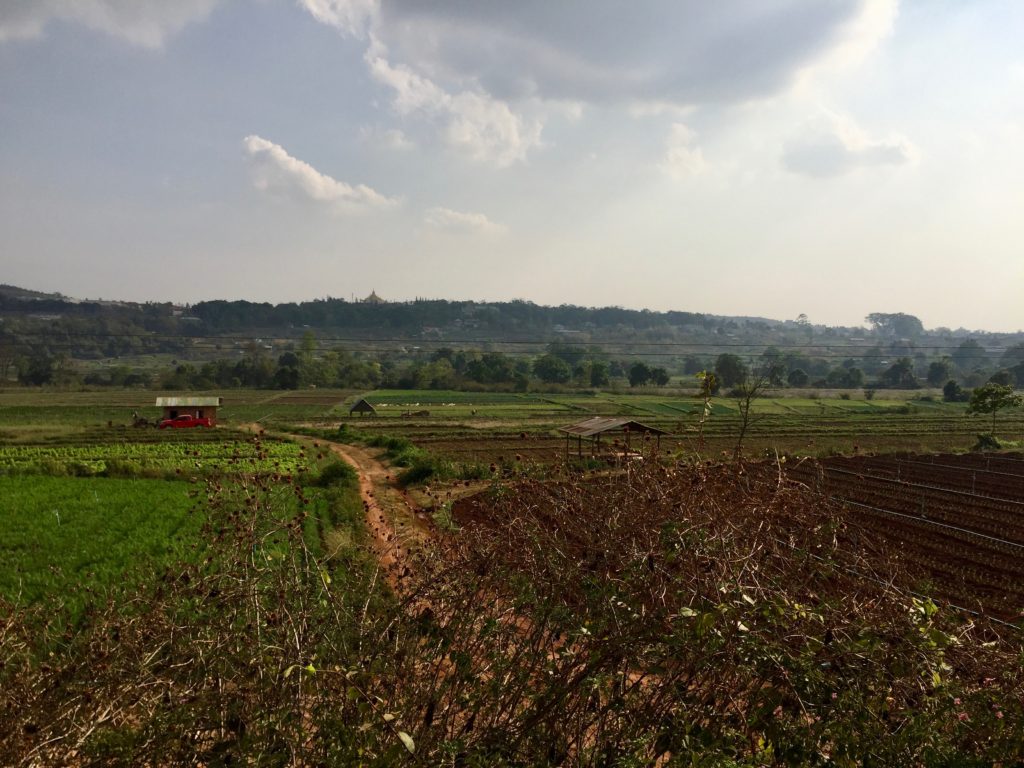
Compared to the northbound journey of the prior week, there were very few tourists on the southbound train.
Locals and foreigners alike hopped onto the seats and angled for the best views out the right-hand side as the main attraction came into view. The carriage buzzed with excitement as the train slowed to a walking pace.
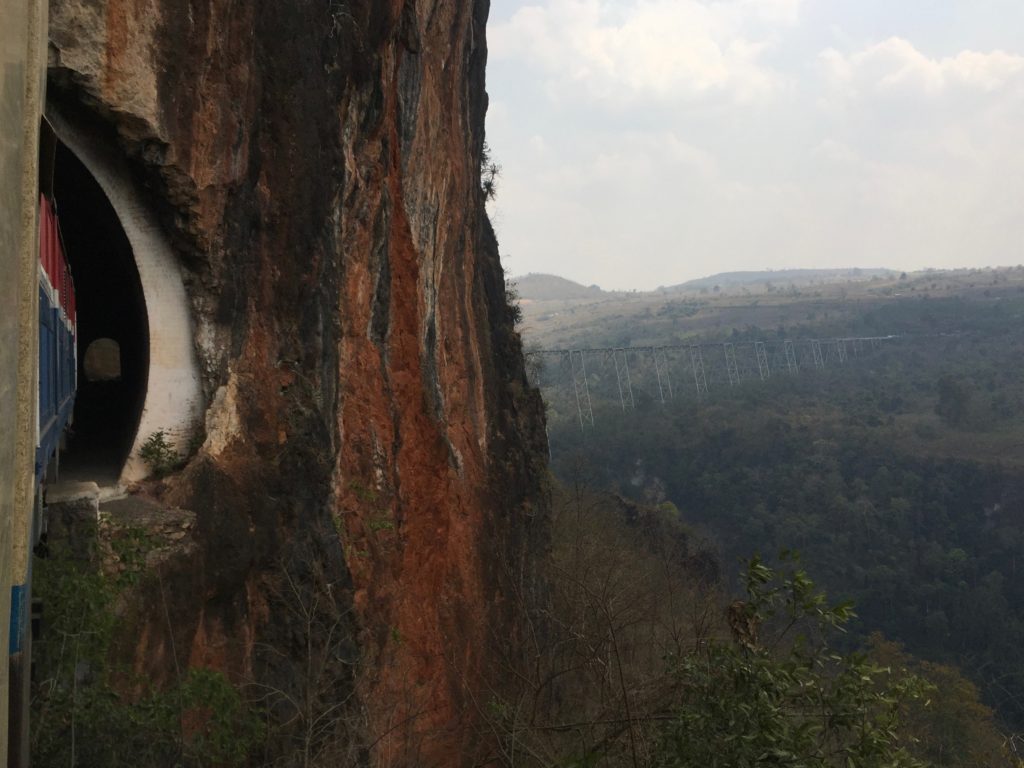
Beyond wispy trees, the viaduct curved across the parched spring landscape into the distance. Two brief tunnels, from dark to light and the bridge revealed itself suddenly, close up, like a game show curtain drop.
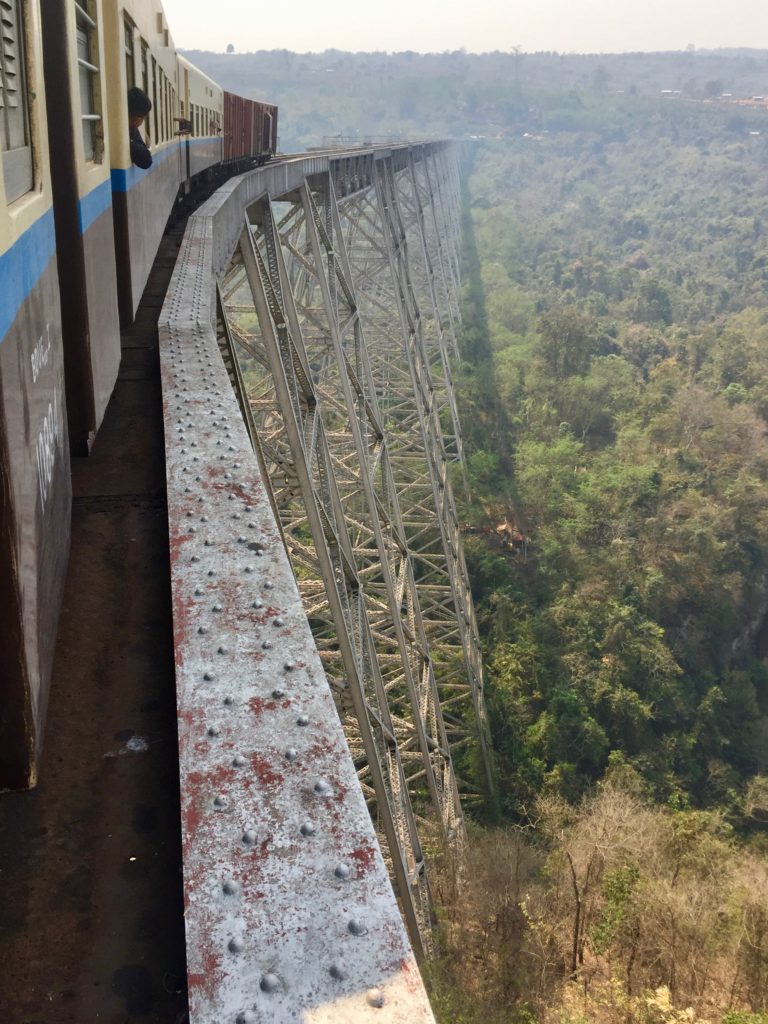
The impressive steel beam structure that is the Goteik Viaduct spans 2,260 feet (689 meters) and carries trains across a forested ravine at a height of 335 feet (102 meters). By comparison, the Statue of Liberty stands 305 feet (93 meters).
So yeah, it’s tall!
A tangle of trusses, girders and rivets rise from the scrub below to support the massive single-track bridge. People hung out the windows, fascinated by this marvel of engineering in the Burmese wilderness.
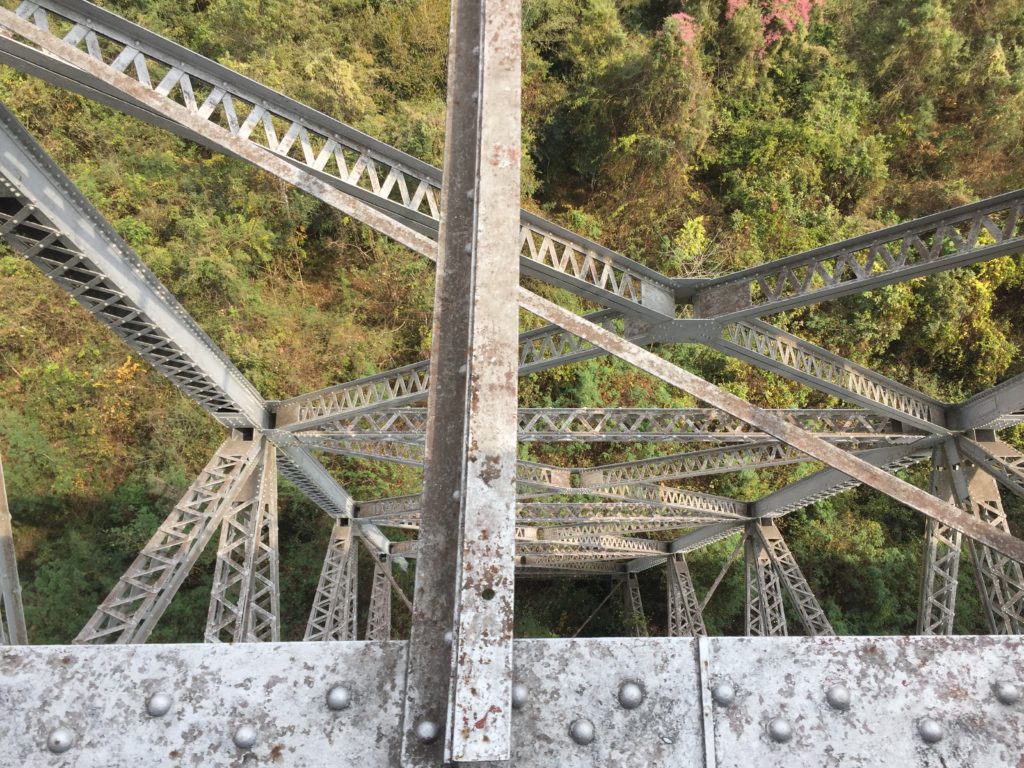
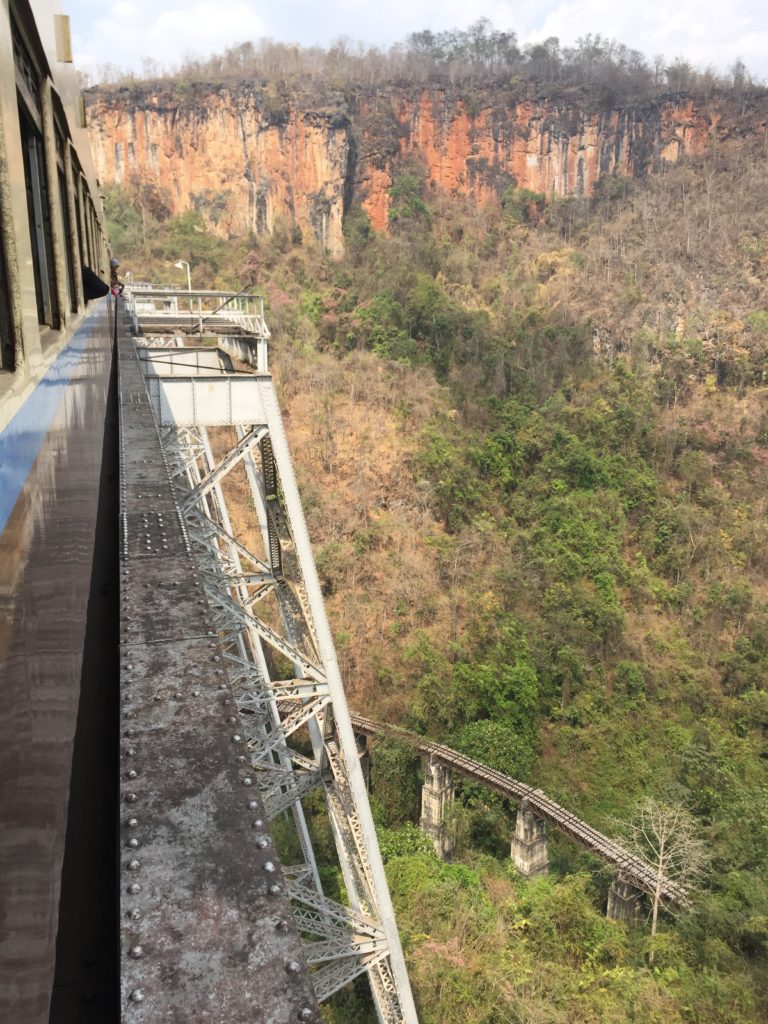
This was my second trip across and I was still in awe.

Just as quickly as the famous railway bridge appeared, it faded in the distance.
Everybody settled back into their seats, smiles plastered across faces foreign and domestic.
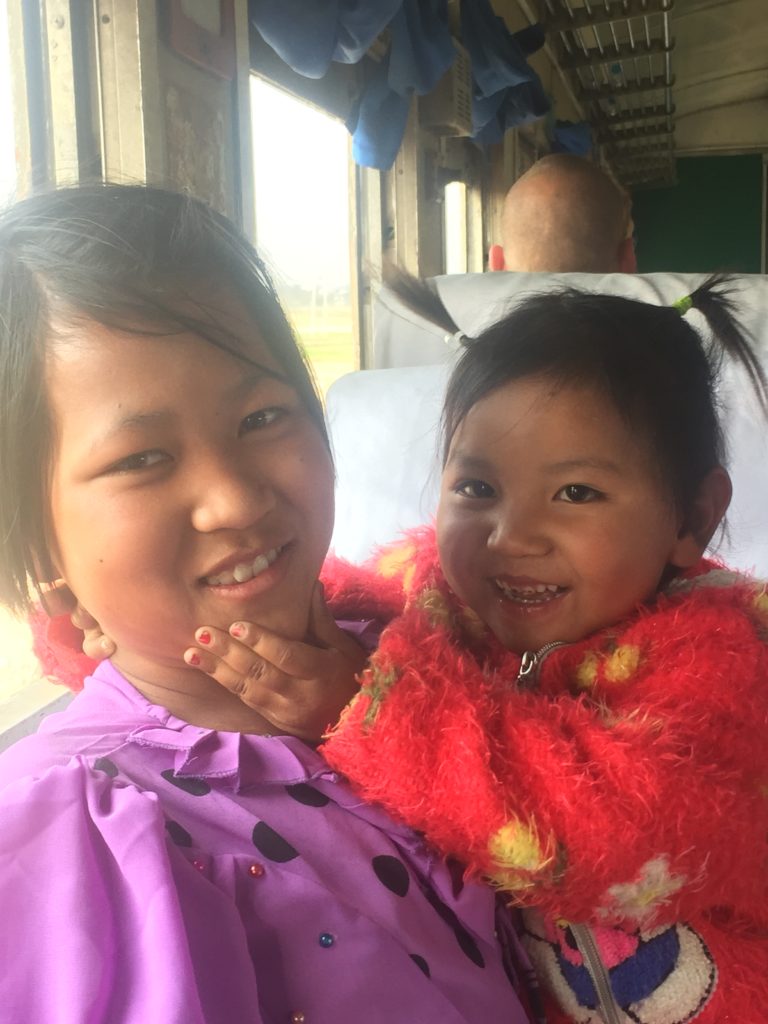
Another three hours and we would be in Pyin Oo Lwin.
MYANMAR RAILWAYS
Myanmar’s railways have been neglected over the years, to put it mildly. Half a century of military dictatorship plus economic sanctions mean infrastructure here is often decades behind its more economically reform-minded and politically progressive neighbors Thailand and Vietnam.
Luxurious trains they are not.

Burmese trains rock and roll constantly while the brakes squeal and grind like the soundtrack of an iron works factory. The rails are meter gauge, which certainly doesn’t help the rocking, but the entire system is in a general poor state of repair.
A quick Google search shows derailments to be a relatively common occurrence.
The country has kicked off a railway reform effort, but expect changes to move at a typically glacial Burmese pace.
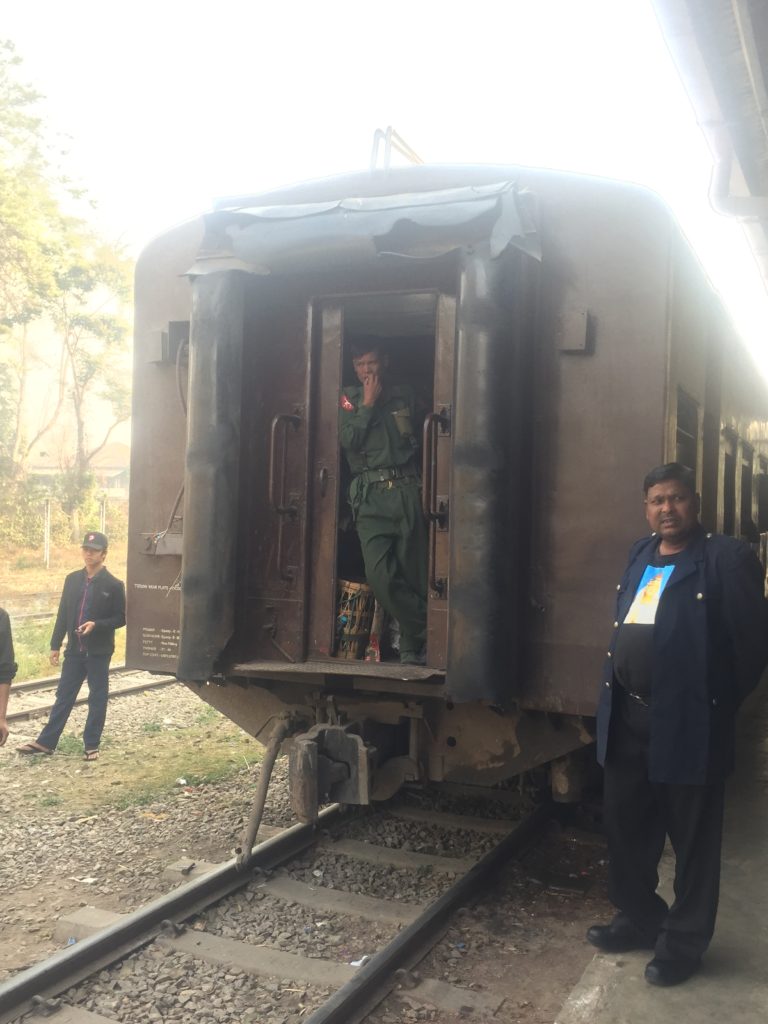
I spoke with plenty of travelers who were turned off by videos like this. While that’s hardly the rule, I wouldn’t necessarily call it an exception.
My phone clip of the rocking and rolling gives an accurate idea of what to expect on the rails between Mandalay and Lashio. The bumpiness never really stops, it simply calms down a bit as the train itself slows up.
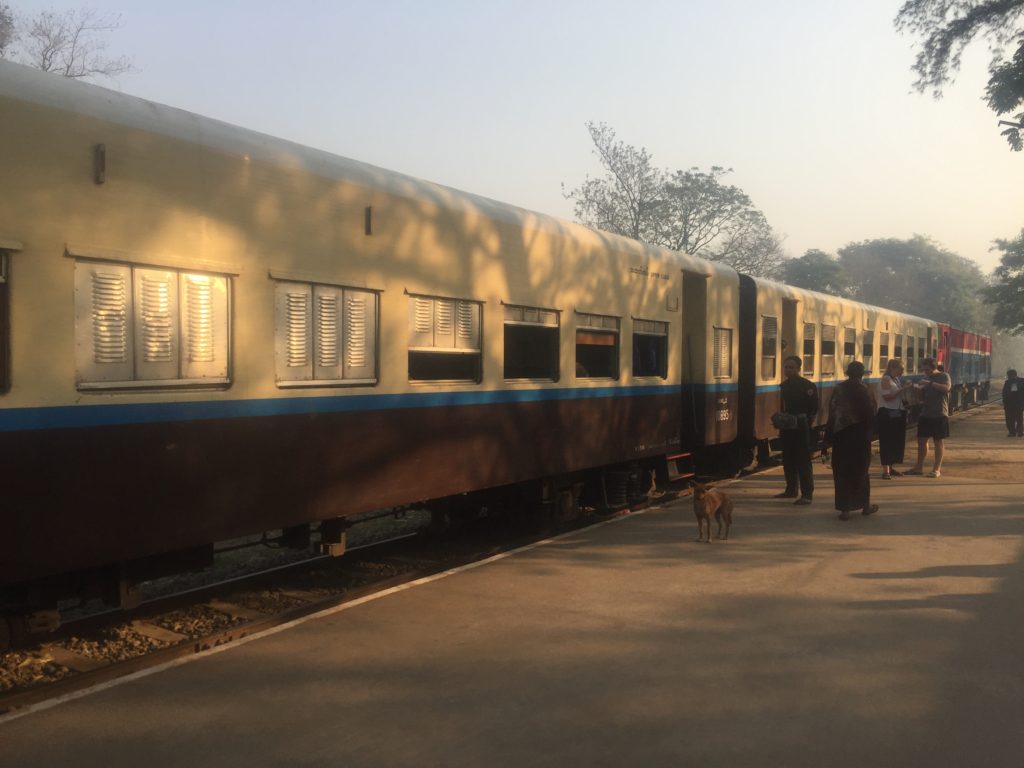
Best advice — approach Myanmar’s railways with a sense of humor, go ‘upper class’ and enjoy the experience. With a sense of adventure it’s an experience you won’t soon forget.
DO IT YOURSELF
What is the Goteik Viaduct?
A famous railway bridge spanning a river valley in Myanmar’s Shan State. At the time of construction in 1901 it was the largest railway trestle in the entire world. Today it remains Myanmar’s highest rail bridge.
Where is the Goteik Viaduct?
Central Myanmar, basically halfway between Mandalay and Lashio, the upper end of the rail line. Most visitors will probably give the entire 15 to 18 hour journey a pass, however the crossing of the Goteik Viaduct should not be missed!
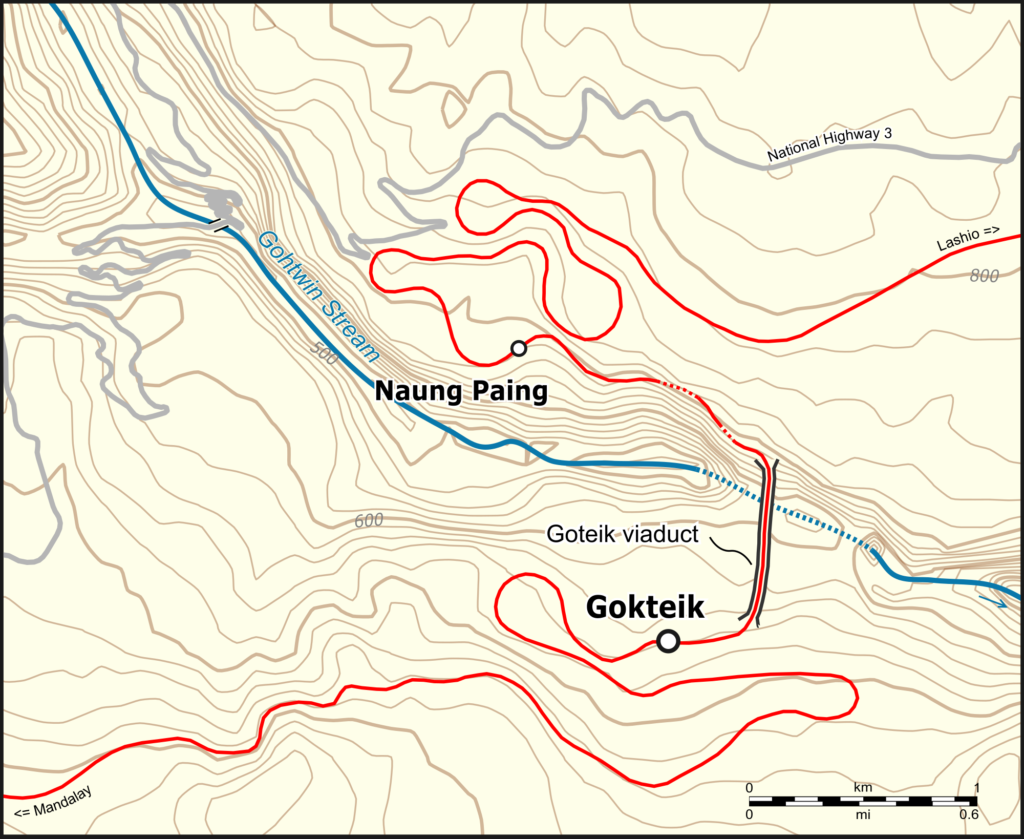
How to cross the Goteik Viaduct?
There are plenty of shorter journeys which cross the viaduct, but don’t require a major time commitment. Several stops along the rail line are worthy of a visit, but you could make a simple return trip in a single day.
With more time, arrange a trek in the frontier town of Hsipaw or enjoy the fresh air and throwback feel of British colonial capital Pyin Oo Lwin. Indeed, riding the rails between the two makes for a perfect few days beyond Mandalay.
The vast majority of travelers in this neck of the woods are journeying north from Pyin Oo Lwin. Because of this, prime tickets may not be readily available on a daily basis. By prime I mean a specific side of the carriage.
Look at the map above and you’ll notice the curvature of the route near the actual Goteik Viaduct. All those iconic photos show off the curvature of the train and the underlying bridge. If you are traveling north you want to sit on the left side. Of course when traveling south you want a seat on the right.
North from Pyin Oo Lwin
The daily northbound train leaves at 08:22 (8:22am).
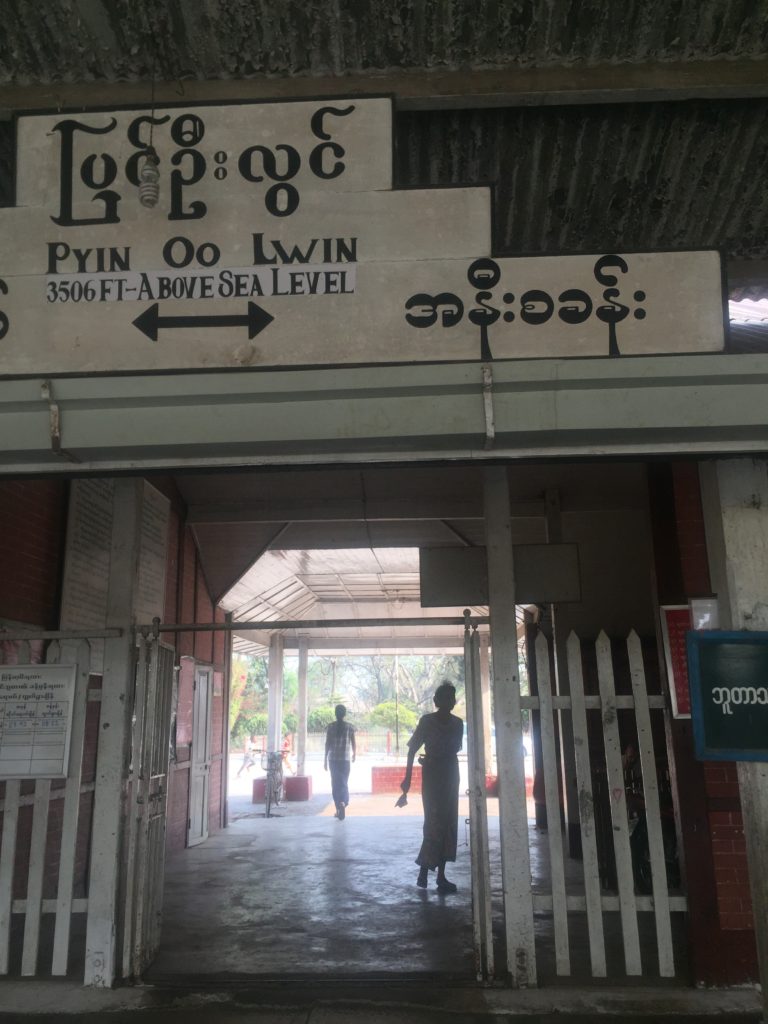
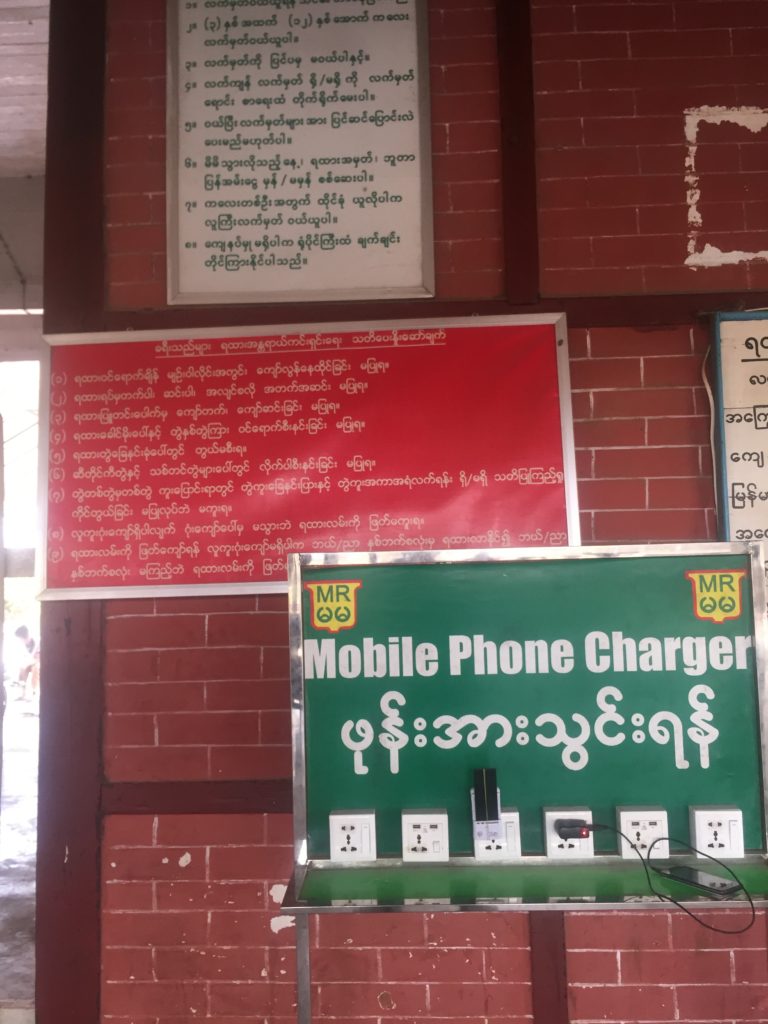
To obtain your preferred seat head to the station the day prior to departure. Pyin Oo Lwin’s ticketing office opens to foreigners at 16:00 (4pm). Take your passport. Buy a ticket as soon as you are sure of your planned departure.
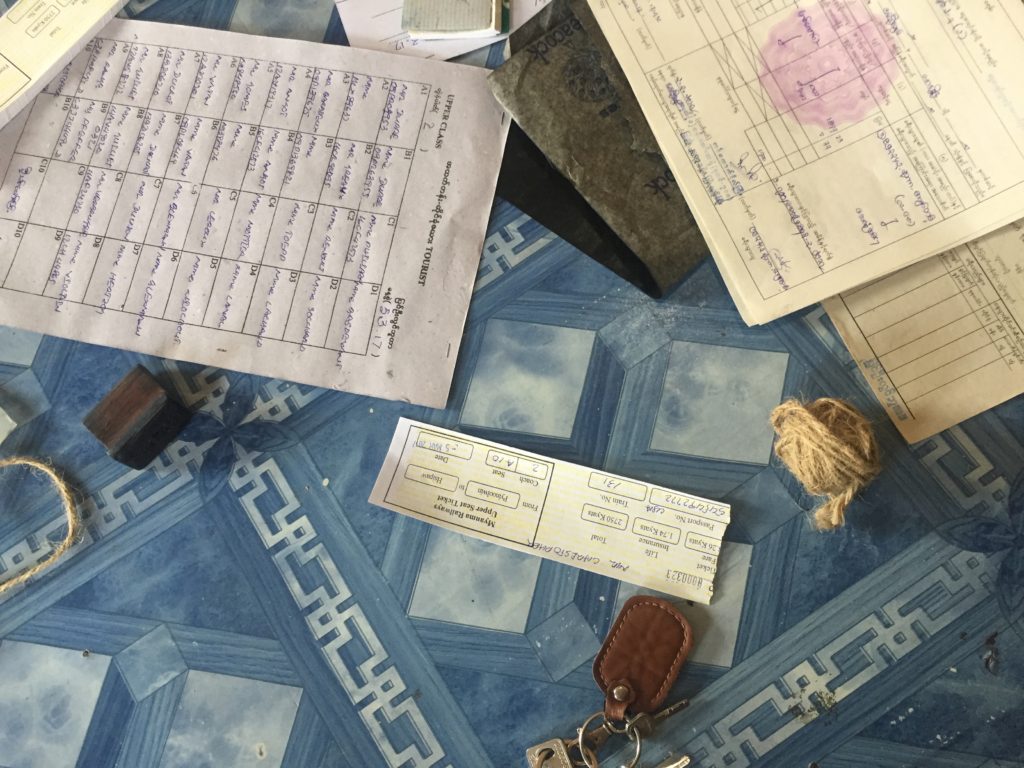
On my first trip to the ticket office, the station master said all the left side seats had been taken. I had time to kill, so I spent an extra night in town and returned the following day.
Turns out a tour group booked an entire carriage the previous day and blocked out half the seats on my day of travel. As a result of increased demand the railway will often add a carriage. But there are no guarantees.
The good news? Tour groups just want to cross the Goteik Viaduct and will usually get off at the first station beyond the bridge — Nawngpeng. After that you may have the whole car to yourself.
Assuming you can get on the train in the first place.
Before and after Nawngpeng…
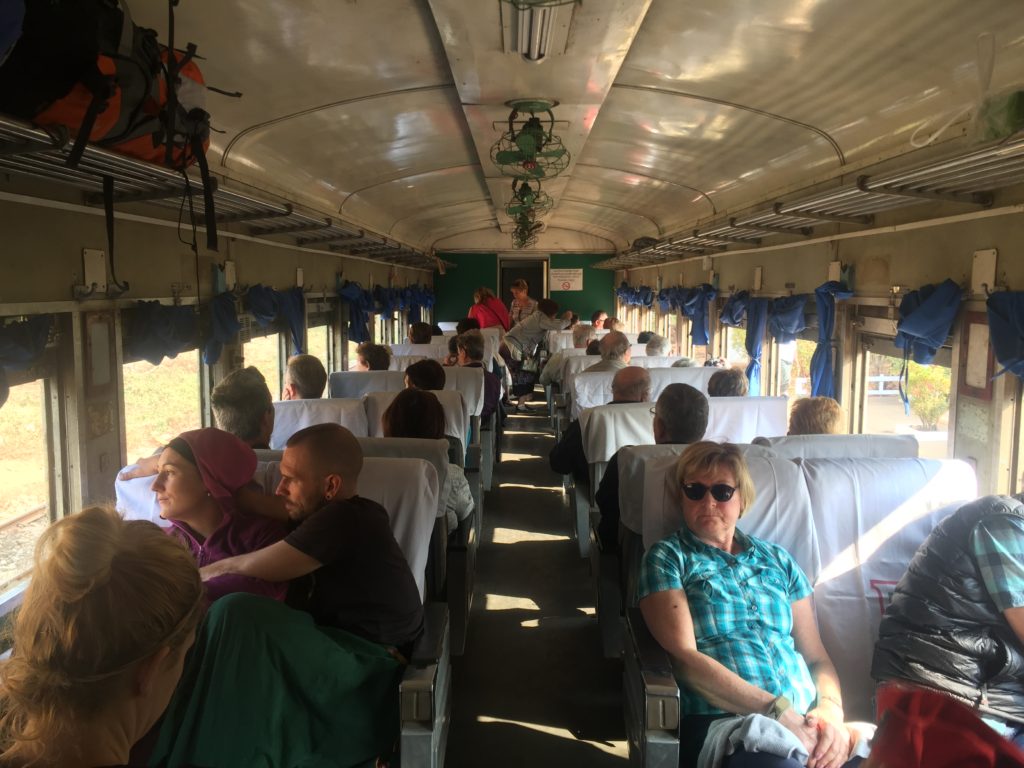
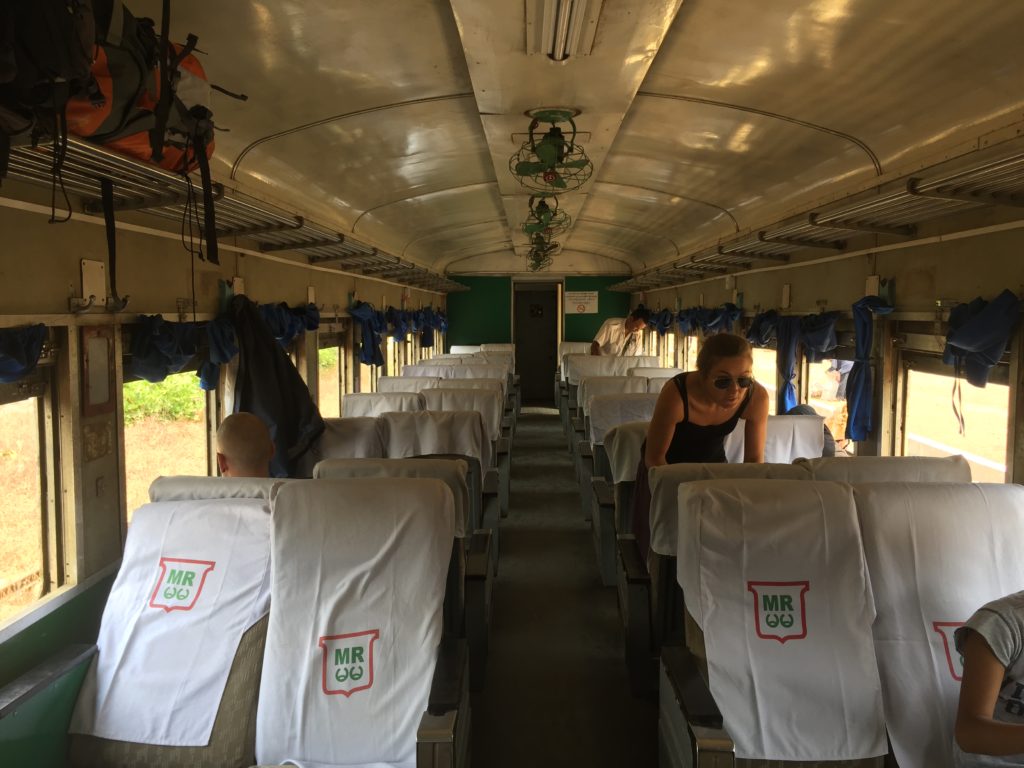
North from Mandalay
The train leaves bright and early at 04:00 (4:00am). Just as above, head to the station to purchase tickets in advance. There should be less competition for seats due to the early departure. Again, you want to sit on the left.
See the final paragraph of this post for a note on acquiring tickets from Mandalay via a local agency.
South from Hsipaw
Daily southbound departure at 09:30 (9:30am). The return trip from Hsipaw is much less touristed than the more popular northbound route. Buying your ticket at the station in the morning won’t be a problem. Sit on the right.
Goteik Viaduct Timetable
| NORTHBOUND | SOUTHBOUND | ||||
|---|---|---|---|---|---|
| Mandalay | depart | 04:00 | Lashio | depart | 05:00 |
| Pyin Oo Lwin | arrive | 07:52 | Hsipaw | arrive | 09:20 |
| depart | 08:22 | depart | 09:30 | ||
| Gokteik | arrive | 11:03 | Kyaukme | arrive | 10:55 |
| depart | 11:08 | depart | 11:10 | ||
| Nawngpeng | arrive | 11:58 | Nawngpeng | arrive | 12:07 |
| depart | 12:13 | depart | 12:20 | ||
| Kyaukme | arrive | 13:07 | Gokteik | arrive | 13:13 |
| depart | 13:22 | depart | 13:15 | ||
| Hsipaw | arrive | 14:38 | Pyin Oo Lwin | arrive | 15:55 |
| depart | 14:48 | depart | 16:40 | ||
| Lashio | arrive | 19:05 | Mandalay | arrive | 21:15 |
Tickets
Myanmar is old school — 100% paper tickets with handwritten details. And they are certainly cheap.
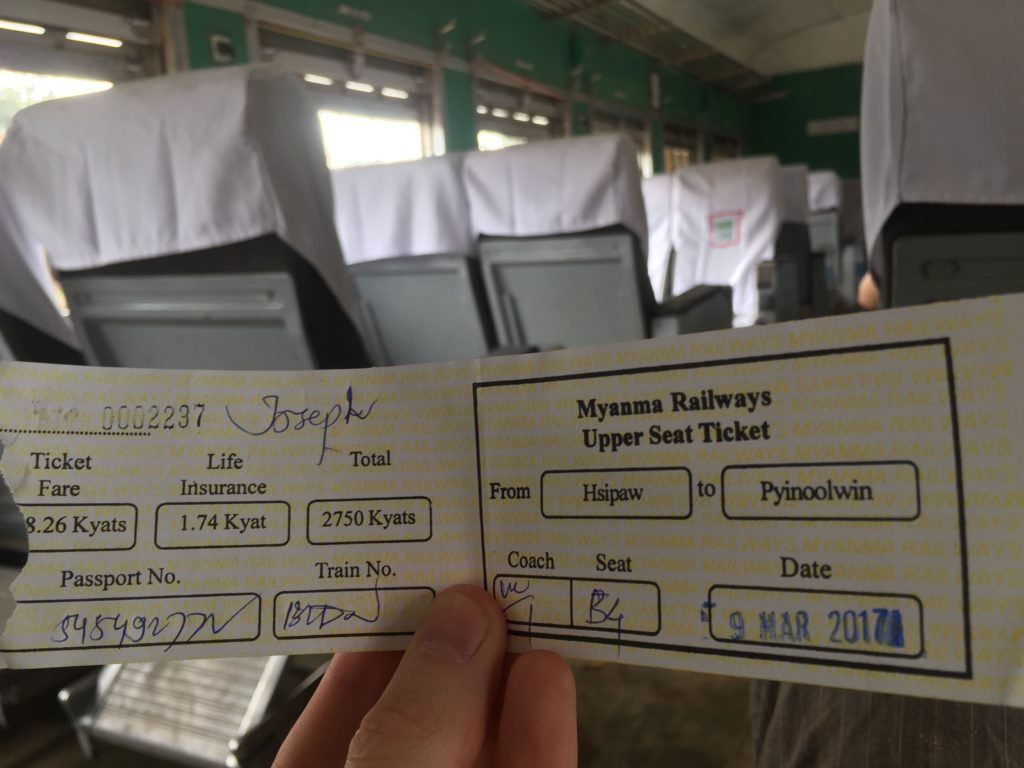
An upper class seat from Mandalay all the way to Lashio goes for 5,600 kyat (US$3.54). Upper class seats on the most common tourist route, Pyin Oo Lwin to Hsipaw, run 2,750 kyat (US$1.74).
Ordinary class seats are cheaper still, but a good bit less comfortable. Think wooden benches instead of padded reclining seats… which will most likely be broken and permanently reclined.
All Myanmar rail bookings are done by hand, so it isn’t possible to, say, ask at the Mandalay station for a booking originating in Pyin Oo Lwin the following day.
What is possible, however, is advance booking via an agency.
I used 12 Asia Go for my overnight sleeper trip between Mandalay and Yangon, but it seems they will sell you a ticket on the Goteik Viaduct line as well. But it must originate in Mandalay — nowhere else. They will add a service fee, naturally, although the ridiculously cheap starting prices mean even a markup of more than 300% will place the final cost at a relatively reasonable 13,322 kyat (US$8.40).
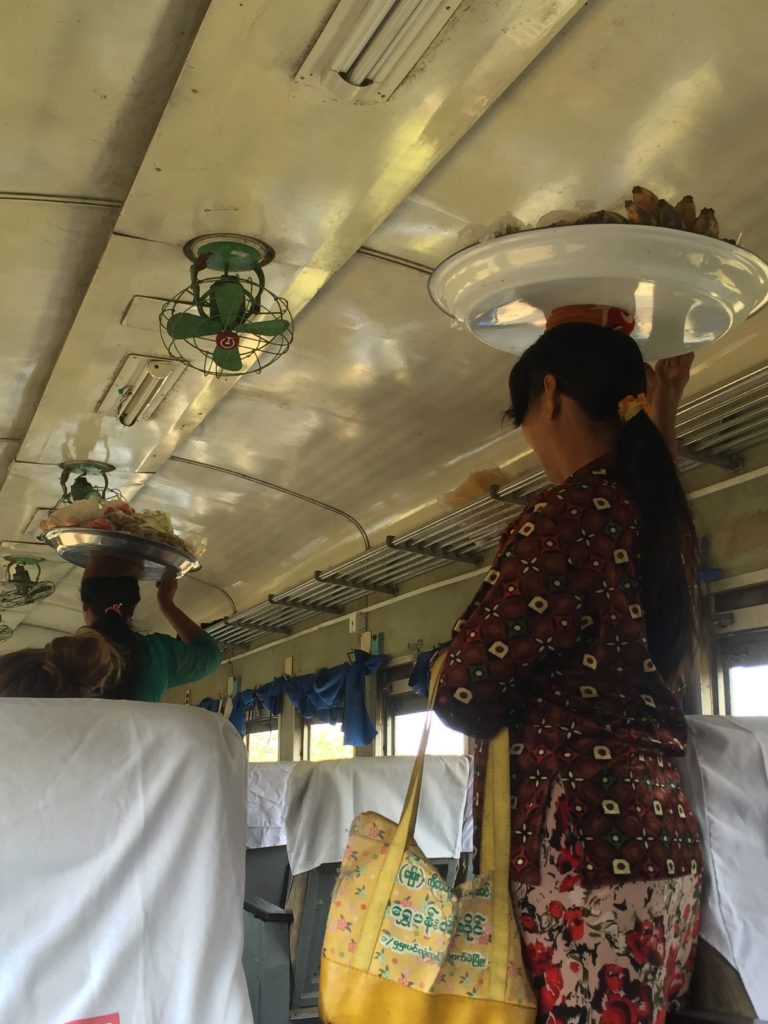
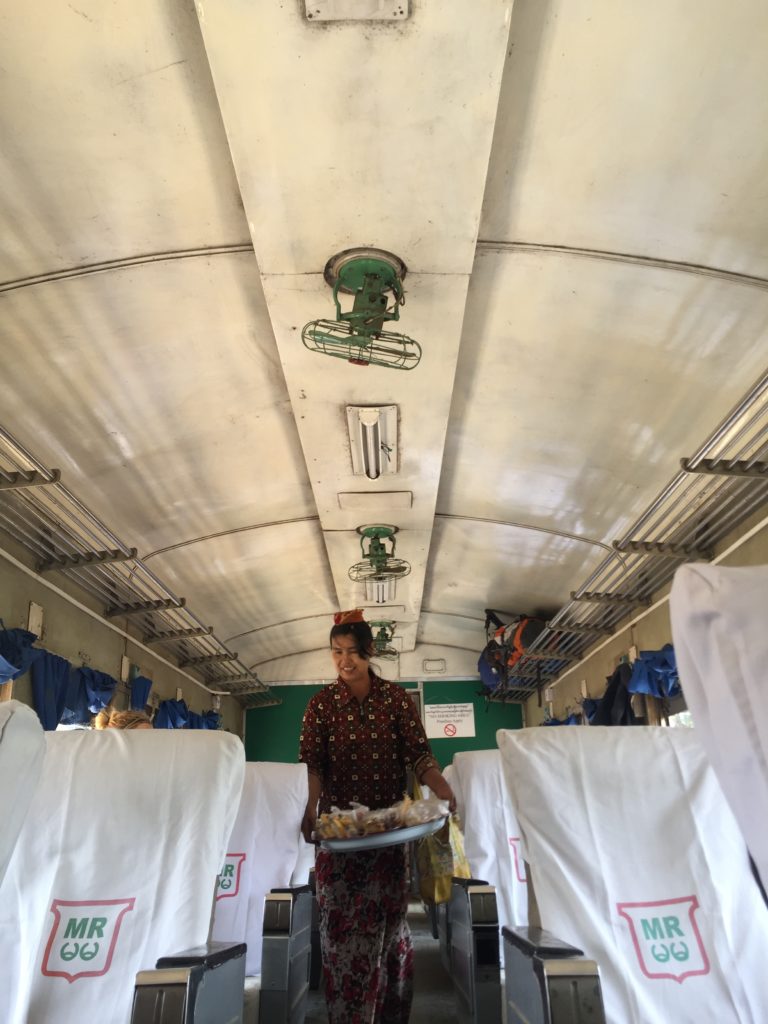
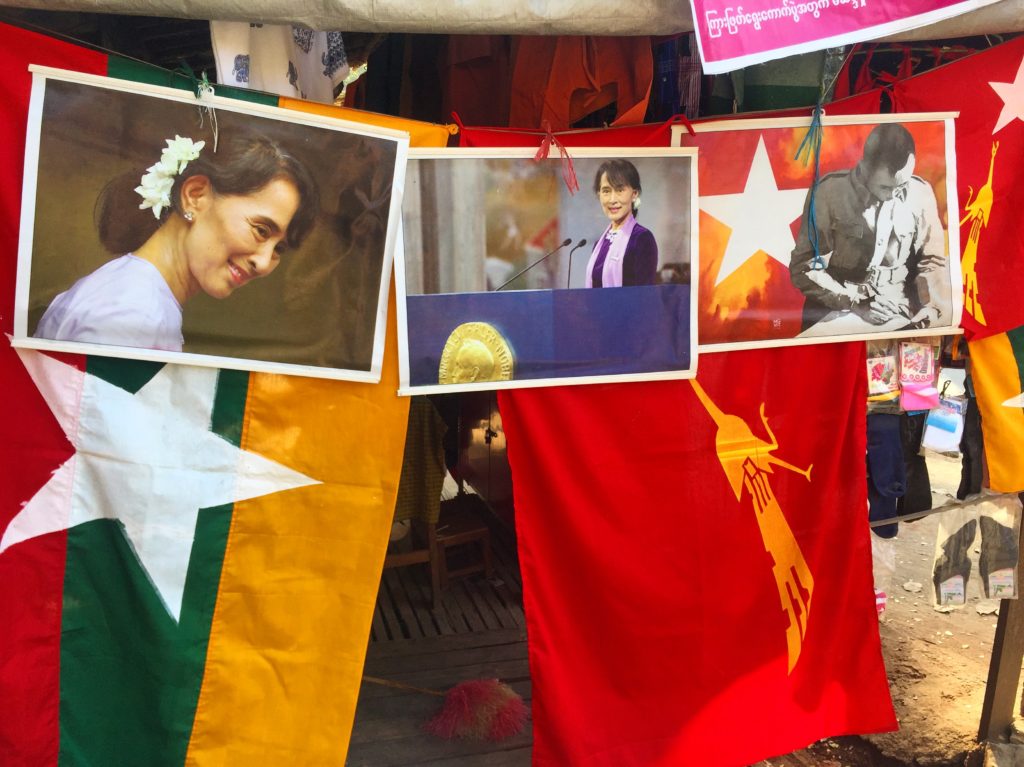
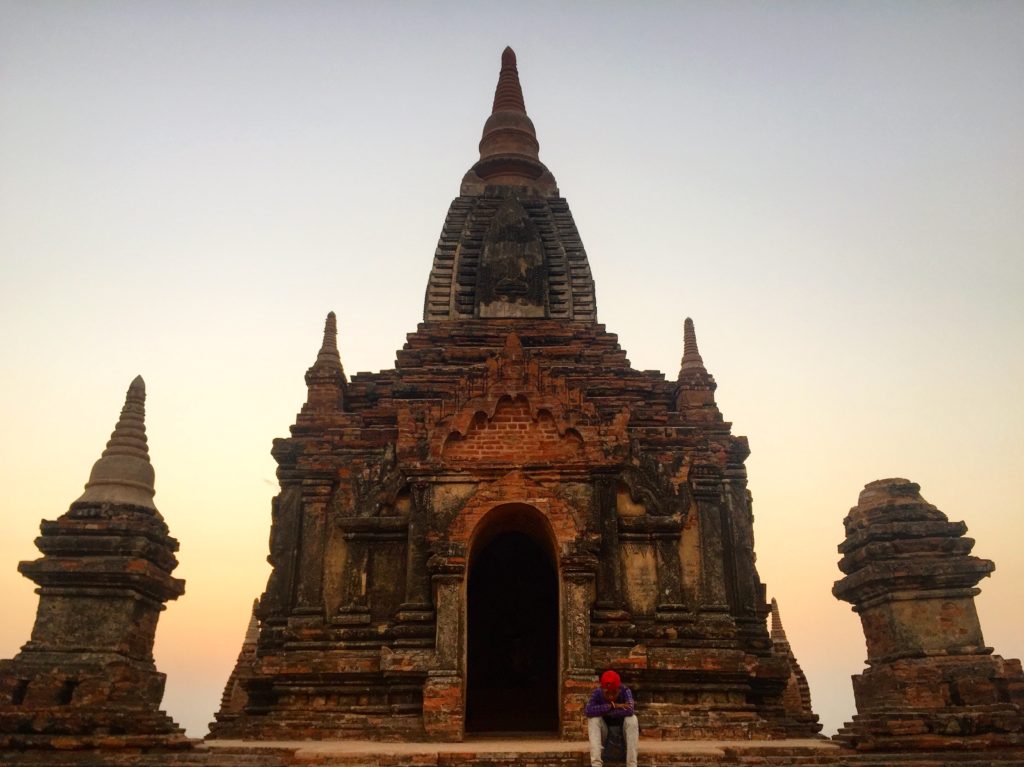
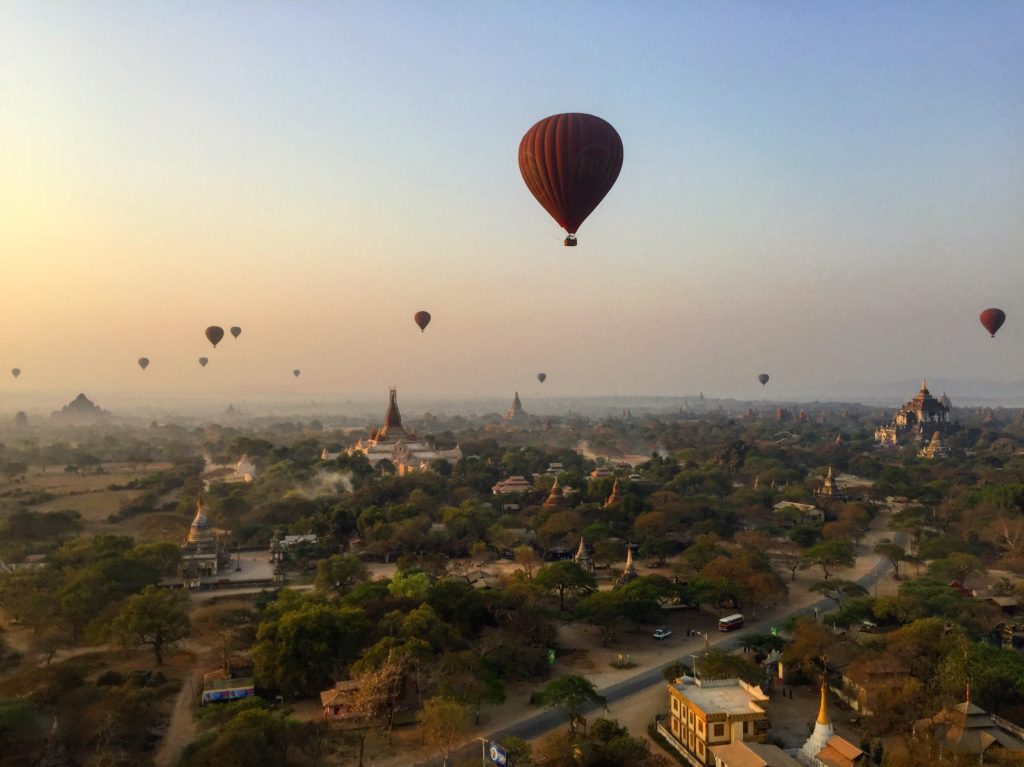
Pingback: Pyin Oo Lwin | Myanmar | Maymyo | Kandawgyi Gardens | Anisakan Falls | No Guidebooks
Pingback: Mr. Bike | Jungle Trek | Myanmar | Hsipaw | Shan State | No Guidebooks
Pingback: Bagan by Hot Air Balloon | Myanmar | Need to Know | No Guidebooks
OMG I cant beleive you were brave enough to take photos of the military! I rarely have the courage to take photos or people in general nevermind someone in authority! Great write up though! We were thinking of trying to fit this into the day trip we’re looking at to Pyinoolwin but it just looked too tight on time…
Thanks!
People across the board in Myanmar were all about photos… even the military, at least when off duty. Seriously. I fielded more selfie requests in Monywa, Pyin Oo Lwin (especially the gardens!) and Shwedagon than I ever imagined beforehand. I would always say, sure I will take a photo with you, but then we will also take one with my phone. Hah. Just be open to connecting. Harder when not traveling alone, eh?